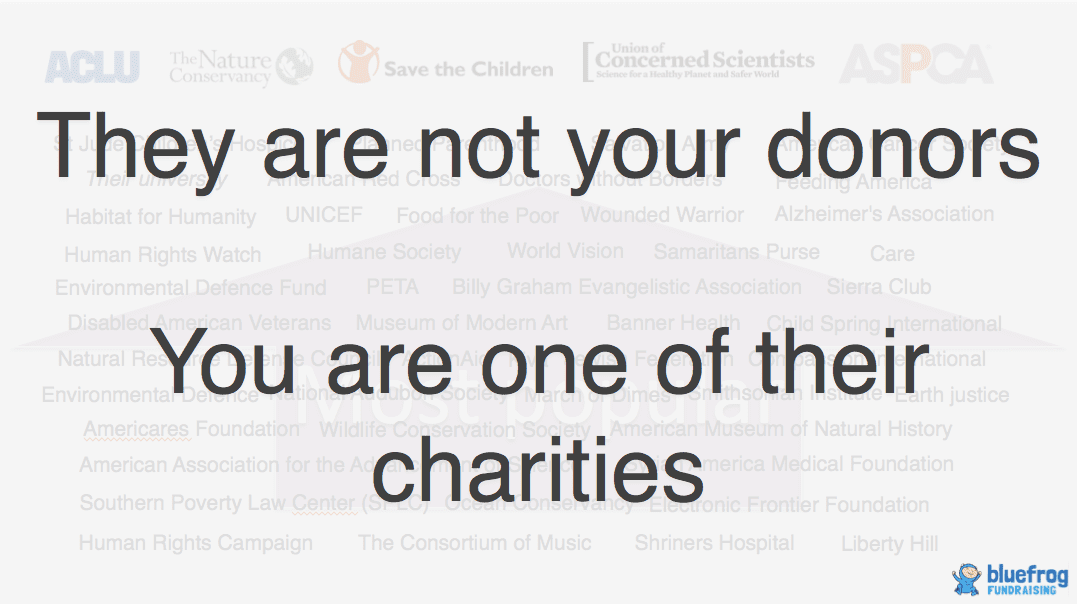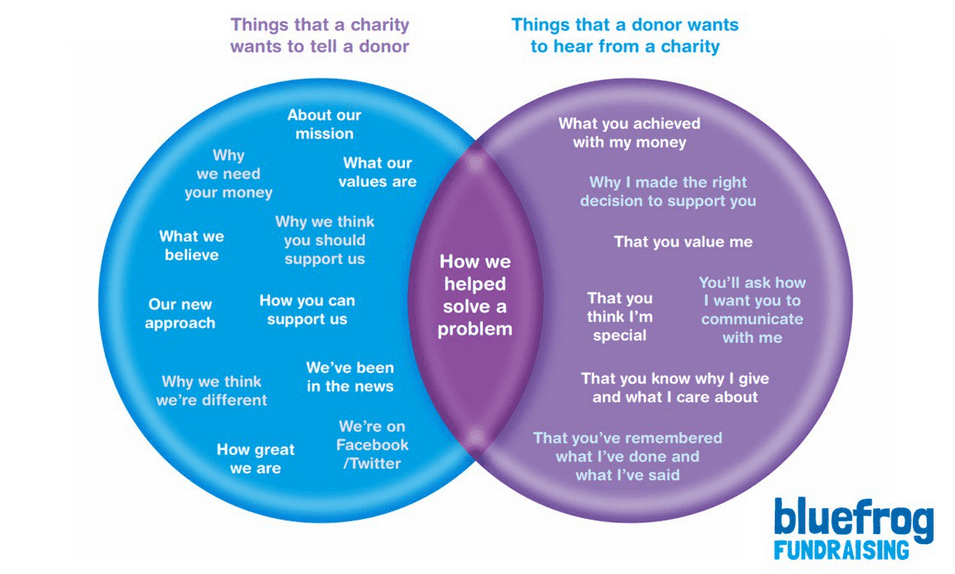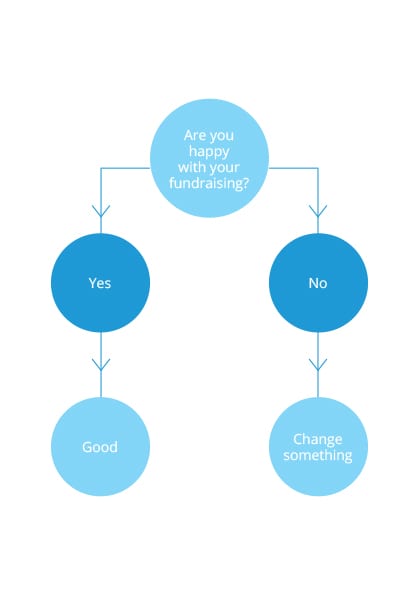She is not your donor. You are one of her charities.
This slide appeared in my recent presentation at the AFP international fundraising conference on Bluefrog's research into the American mid-level donor. It's taken on a life of its own as it's bounced round the internet so I thought I would share it here too.

It was based on a simple but obvious finding apparent in every single research exercise that we undertake – donors tend to have a portfolio of charities that they support. And within each specific portfolio we find a preferred group of organisations who compete with a less favoured subset. I'll let you guess who receives most money.
In the US study for instance, we spoke to donors that were sourced from ACLU, The Nature Conservancy, Save the Children, The Union of Concerned Scientists and the ASPCA. But between them, they mentioned more than fifty different charities that were front of mind as organisations that they supported.
All quite obvious really, but it usefully spins the perspective. Just because you have recruited a donor, they are not a guaranteed source of income. If they are going to stick around, they need to feel a worthwhile member of your (hopefully) worthwhile charity.
And that sums up a fundraiser's job.
Quite simply, the more effort you put in to giving them a great experience of being a donor, the more likely they are to keep you as one of their charities.
With thanks to Chris Herron, also known as @FundraisingAU who I think was the first person to share the gender specific version used in the title of this piece.
Tags In
Related Posts
2 Comments
Comments are closed.
The Essentials

Crack the Code to Regular Giving: Insights, Strategies, and a Special Giveaway!

‘Tis Halloween. Keep to the light and beware the Four Fundraisers of the Apocalypse!

Why do people give? The Donor Participation Project with Louis Diez.

A guide to fundraising on the back of a postcard

What does the latest research tell us about the state of fundraising?









[…] Fundraising’s Mark Phillips presented this slide at the recent AFP international fundraising […]
[…] My husband, kind soul that he is, will often open each piece of mail we receive. And read many of them. (There is some sorting: into “one of our charities” and “not one of ours”. Your donors probably do the same. Of course, the goal is to become one of your donor’s charities.) […]